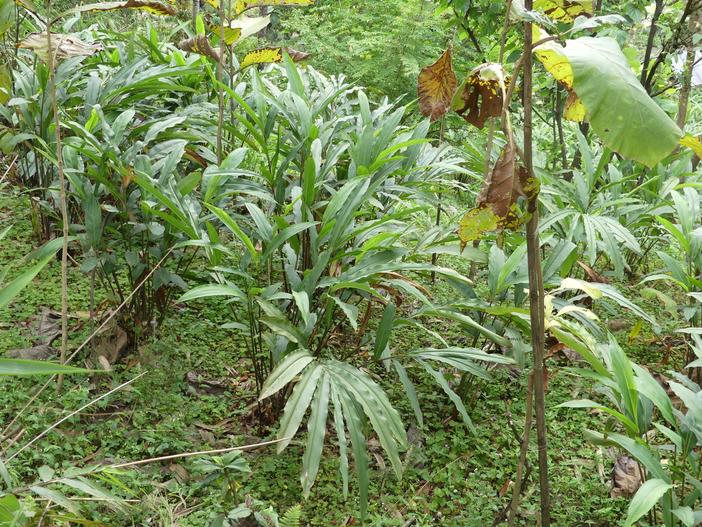Black Cardamom
(Amomum subulatum)
Black Cardamom (Amomum subulatum)
/
/

A. J. T. Johnsingh, WWF-India and NCF
CC BY-SA 3.0
Image By:
A. J. T. Johnsingh, WWF-India and NCF
Recorded By:
Copyright:
CC BY-SA 3.0
Copyright Notice:
Photo by: A. J. T. Johnsingh, WWF-India and NCF | License Type: CC BY-SA 3.0 | License URL: https://creativecommons.org/licenses/by-sa/3.0 | Uploader: Ajtjohnsingh | Publisher: Wikipedia Commons










Estimated Native Range
Summary
Amomum subulatum, commonly known as black cardamom, is a perennial herb that is part of the ginger family and is native to the moist, mountainous forests in the Eastern Himalayas, including the Indian subcontinent, particularly in regions like Sikkim and the eastern Himalayas, as well as parts of Nepal and Bhutan. It typically grows to a height of 1-2 meters and is characterized by large leaves and small, yellowish flowers with purple stripes, which are followed by the distinctive seed pods. These pods are rough-textured, dark brown to black, and contain many small, aromatic seeds.
Black cardamom is valued for its seed pods, which have a strong, smoky flavor due to traditional drying over open flames, and are used extensively in Indian and regional cuisines to impart a unique taste to dishes. In cultivation, Amomum subulatum prefers partial shade, moist, well-drained soil rich in organic matter, and a humid environment to mimic its native habitat. It is also used medicinally in Chinese and Indian traditions to treat stomach disorders and jaundice, among other ailments. While not commonly grown in home gardens, it can be a rewarding plant for those interested in culinary herbs. It is relatively low-maintenance but requires protection from cold temperatures and frost.CC BY-SA 4.0
Black cardamom is valued for its seed pods, which have a strong, smoky flavor due to traditional drying over open flames, and are used extensively in Indian and regional cuisines to impart a unique taste to dishes. In cultivation, Amomum subulatum prefers partial shade, moist, well-drained soil rich in organic matter, and a humid environment to mimic its native habitat. It is also used medicinally in Chinese and Indian traditions to treat stomach disorders and jaundice, among other ailments. While not commonly grown in home gardens, it can be a rewarding plant for those interested in culinary herbs. It is relatively low-maintenance but requires protection from cold temperatures and frost.CC BY-SA 4.0
Plant Description
- Plant Type: Herb
- Height: 5-10 feet
- Width: 3-5 feet
- Growth Rate: Slow
- Flower Color: Pink, White, Yellow
- Flowering Season: Spring, Summer
- Leaf Retention: Evergreen
Growth Requirements
- Sun: Part Shade, Full Shade
- Water: Medium
- Drainage: Medium
Common Uses
Edible*Disclaimer: Easyscape's listed plant edibility is for informational use. Always verify the safety and proper identification of any plant before consumption., Fragrant, Low Maintenance
Natural Habitat
Moist, mountainous forests in the Eastern Himalayas
Other Names
Common Names: Black Cardamom, Indian Cardamom, Nepal Cardamom, Greater Cardamom, Hill Cardamom, Winged Cardamom, Xiang Dou Kou, Large Cardamom
Scientific Names: , Amomum subulatum, Cardamomum subulatum,
GBIF Accepted Name: